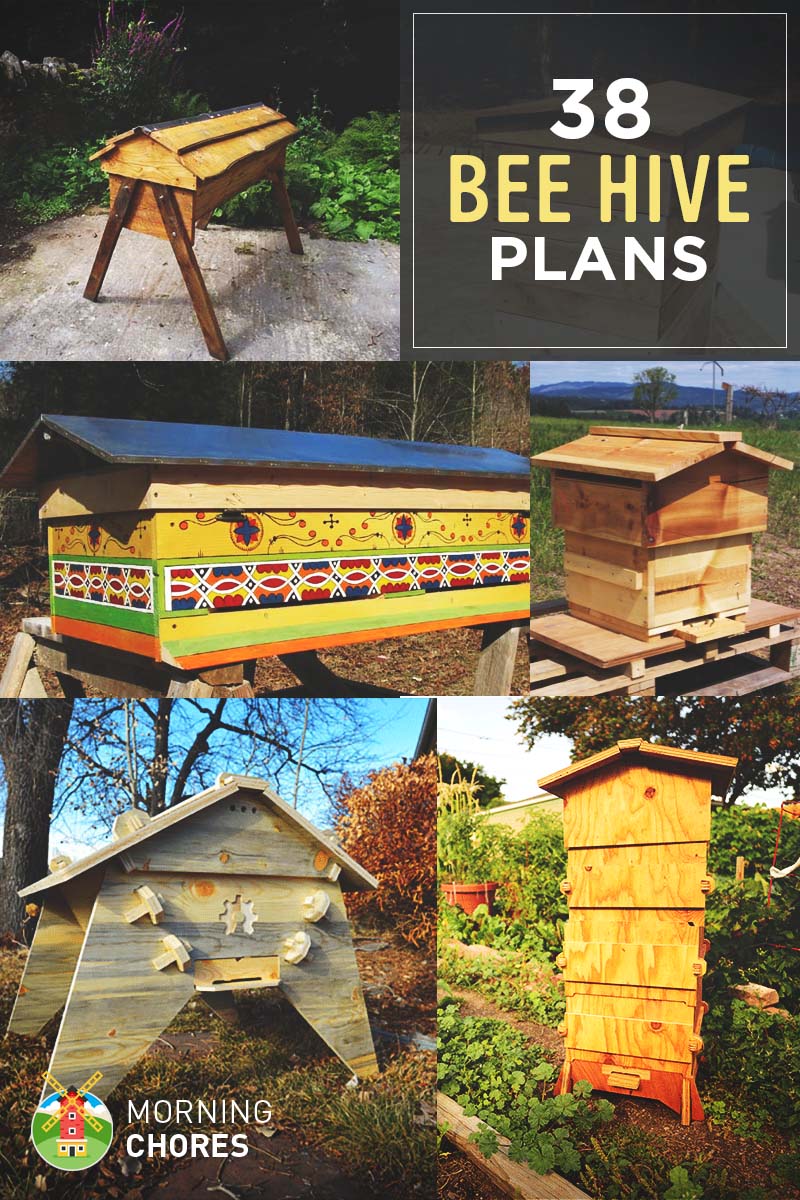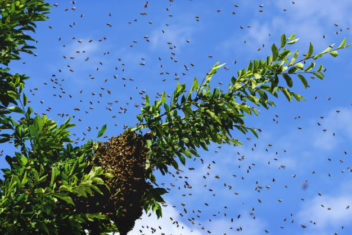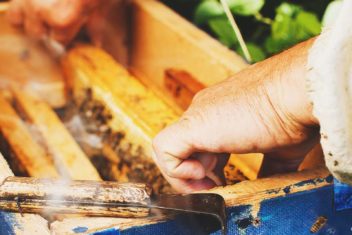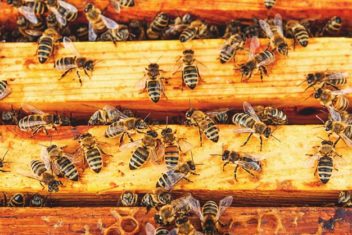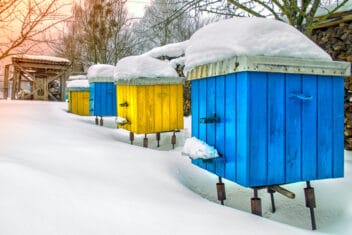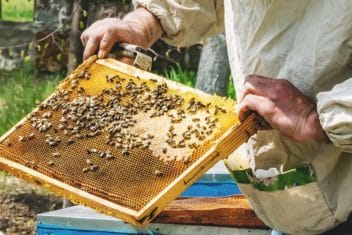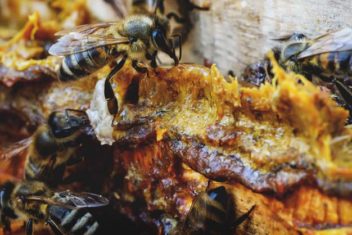It is a large part of our homestead. Not only are bees great for pollination, health benefits, and honey, but they are also a great way to make money to support your homestead.
If you’ve never thought much about beekeeping, you might want to.
This is where this article will come in handy. Today, I’m going to give you many choices you can choose from if you already are a beekeeper or someone toying with the idea.
I feel certain, you will be more enticed by the idea after seeing these options.
Difference Between Langstroth vs. Top Bar vs. Warre Hives
There are three popular types of beehives: Langstroth Hive, Top Bar Hive, and Warre Hive. Before we begin with the plans collection, let’s learn the difference between each of them so you know which one to build.
Langstroth Hive Pros and Cons
Pros:
- The most common hive
- Lots of resources and accessories available with standardized measurements
- Little maintenance
- Stackable, space efficient for large-scale beekeeping
Cons:
- The heaviest to lift
- High disturbance when harvesting
- No observation window
Top Bar Hive Pros and Cons
Pros:
- No heavy lifting (unless you need to move the entire hive)
- Very cheap and easy to build for a small scale beekeeping
- Low disturbance, happier bees
Cons:
- Frequent (but simple) maintenance and monitoring
- Measurements and designs are not standardized
- Needs a large space if you want to keep more bees
- Less honey than other designs
Warre Hive Pros and Cons
Pros:
- Lowest maintenance
- Not as heavy as Langstroth when harvesting
- Minimal disturbance
- Space efficient
- Feels more “natural” for the bees
Cons:
- Expensive to build/buy
- Heavier than Top Bar
- New boxes must be placed on the bottom (you need to lift the whole thing)
In short, Langstroth hives are best if you’re planning to keep a lot of bees or planning to expand in the future. Top Bar hives are perfect for small-scale beekeeping or hobbyist who doesn’t want to lift more than 40lbs. Warre hives are the middle ground between Langstroth and Top Bar.
Now, let’s begin with the first beehive plans:
38 Langstroth, Top Bar, and Warre Hive Plans
1. The Colorado Top Bar Beehive
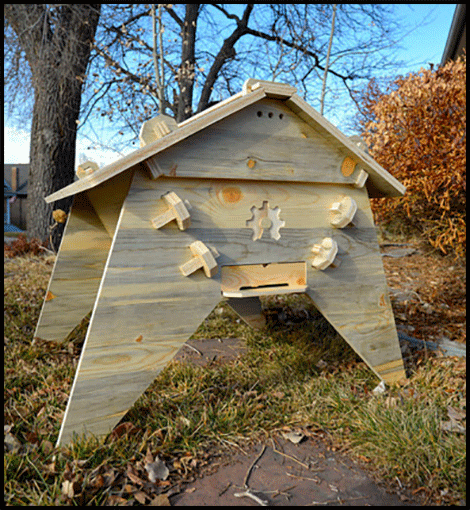
If you are new to beekeeping, a top bar hive might be of interest to you. They originated in Kenya where bees have a tendency to be more aggressive versus those we have in the United States and Europe.
These hives allow you to only disturb certain portions of the hive at a time. This, in turn, makes for happier bees.
Build This Hive2. The Barcelona Warre Beehive

This hive is another hive that would be great for those just being introduced to beekeeping. It is a vertical top bar hive.
It is actually really cool because not only is it top bar but it is also stackable. This makes for much easier use and much happier bees.
Build This Hive3. Top Bar Hive

This is just your basic top bar hive. I’ll be honest, I’ve never used a top bar but after seeing how easy they are to use it is now on my list of things to try.
One of the biggest fears behind beekeeping is being stung. This hive helps eliminate that fear. So they seem like a great fit for those that are new to the beekeeping scene.
Build This Hive4. The Long Langstroth Hive
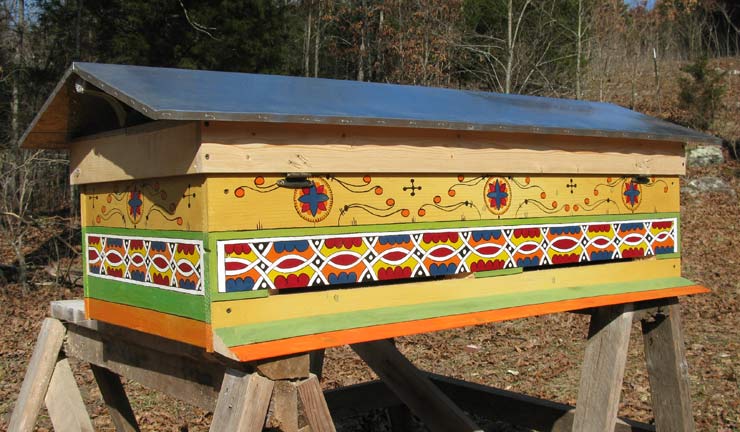
I am more familiar with Langstroth hives. They are what we actually use.
However, I like this one because of its cool design. It is a super long hive that you can just slide frames in and out easily. This hive might be less compact, but I think the ease of use would make up for that.
Build This Hive5. The Wooden Skid Hive
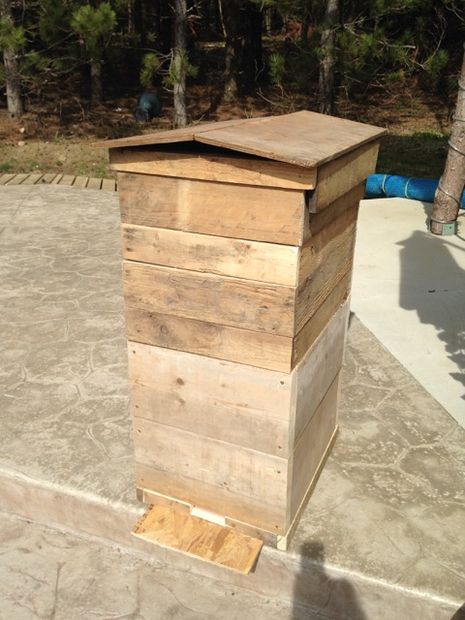
Another name for a skid is a pallet. If you’ve read this blog very long then you know what a fan I am of pallets.
Why? Because they are free and very versatile. In this instance, you will de-construct pallets and build a very functional beehive. I love the rustic look of these hives and it is also a great option for the homesteader on a tight budget.
Build This Hive6. Top Bar Barrel Beehive
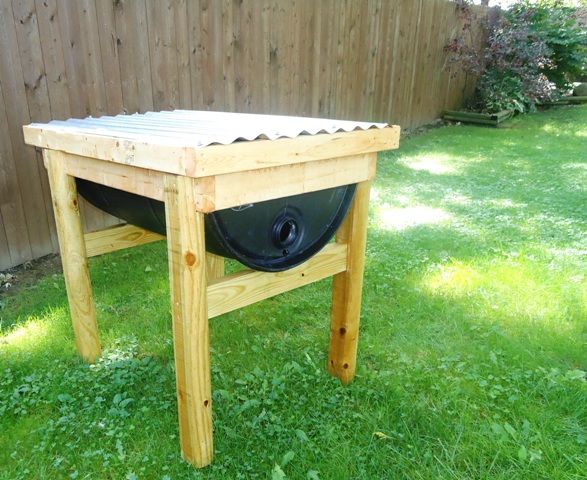
I love upcycling. It just makes me happy to see people use what they have, use their creativity, and not depend so much on their wallet.
This is a top bar beehive which is also known for how easy it is to use. They made the body out of an old 5-gallon barrel. This is creativity at its finest.
Build This Hive7. The DIY Warre Hive
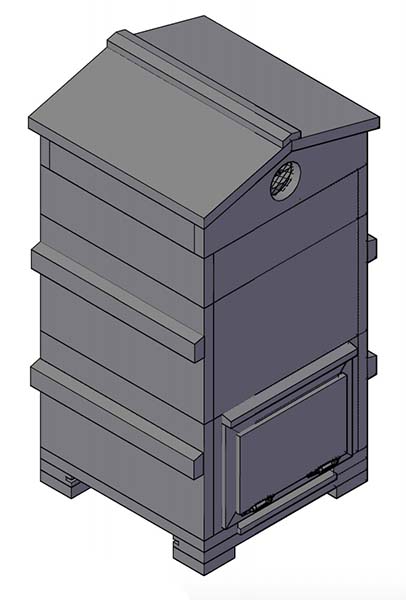
The Warre hive was originally invented by a man with the last name Warre. He published it in his book, Be Keeping For Everyone, around 1948.
It has since been a popular choice. These plans will teach you how to build your very own. Then you can try it for yourself and see if this hive truly is for everyone.
Build This Hive8. The DIY Langstroth Hive
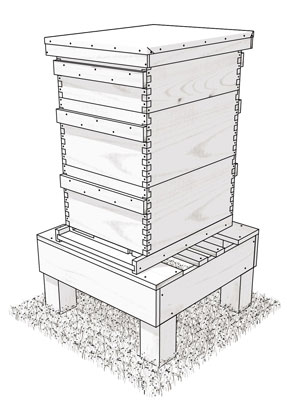
These are the hives we use for our personal beekeeping. I actually really like them. They are easy enough to get into and the bees seem to be very happy inside of them.
We actually purchased our second hand. However, this option is even better because you can have brand new ones in a less expensive way by building them yourself.
Build This Hive9. The Totally DIY Beehive
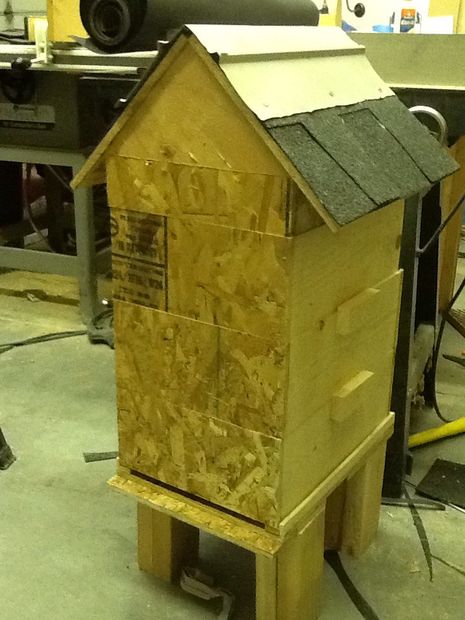
This beehive is completely DIY. It is different because you will actually have to make the frames to fit inside of it.
It is quite a large undertaking but it appears to be very budget-friendly. So if you are someone that wants to keep bees but really don’t have much of a budget, this could be a great option for you.
Build This Hive10. The DIY Warre Hive #2
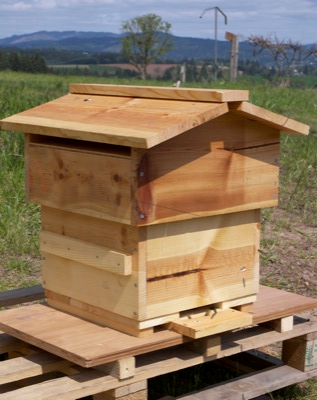
This Warre Hive is pretty budget-friendly as well. They claim each box can be built for around $50-$75. That is much cheaper than what you can usually buy them for.
Warre hives are so great because they are basically smaller versions of Langstroth hives. It is actually recommended as a great option for urban or backyard beekeepers.
Build This Hive11. The Canadian DIY Langstroth
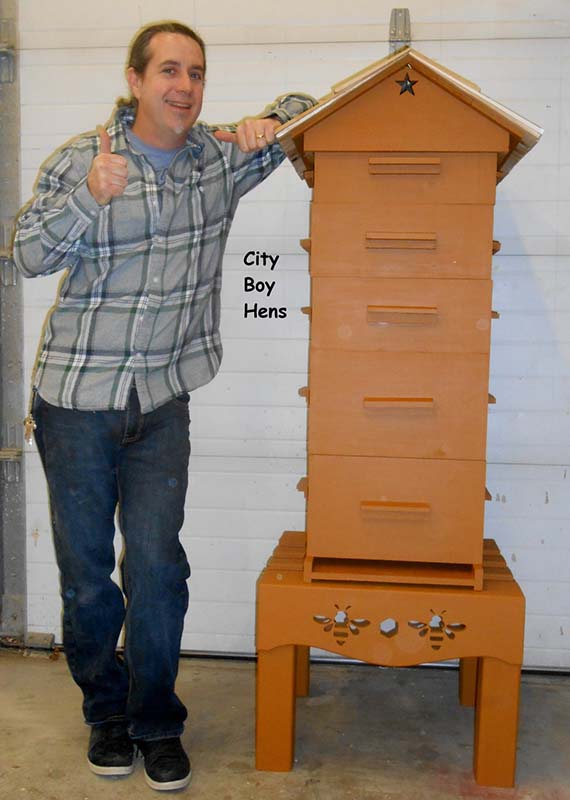
Okay, I called this one Canadian as a tribute to the man that created this post. He builds Langstroth hives with a few differences from the traditional Langstroth hives.
However, the greatest difference noted is the handles. Most Langstroths have indented handles. He actually creates handles and then screws them into the boxes. But you are given full instructions on how to build these hives which could potentially save you a lot of money.
Build This Hive12. The Log Style Beehive
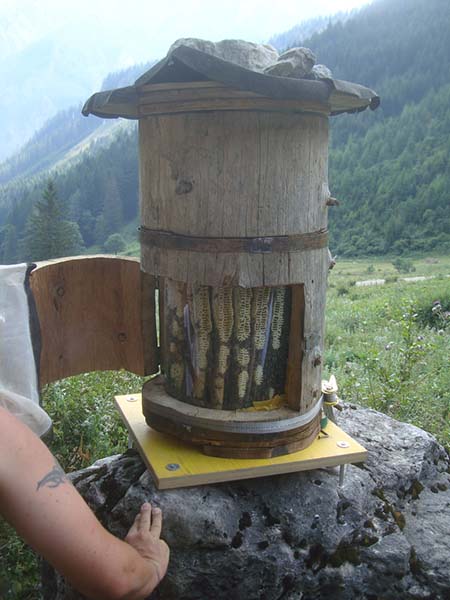
This is a truly unique beehive and one I have never seen before. They literally cut out the center of logs and stack them on top of each other.
They allow the bees to build comb and live in the center of stacked logs. It is very inexpensive and very creative. If you are on a tight budget but have logs lying around your homestead then this option could work for you.
Build This Hive13. Top Bar Hive Plans

These are more plans for a top bar beehive. As mentioned before, top bars were created to disturb less of the hive all at once.
The plans break down each section so even those that are newest to beekeeping and carpentry work could probably figure out how to build these hives without much fuss.
Build This Hive14. The Plywood Swarm Box
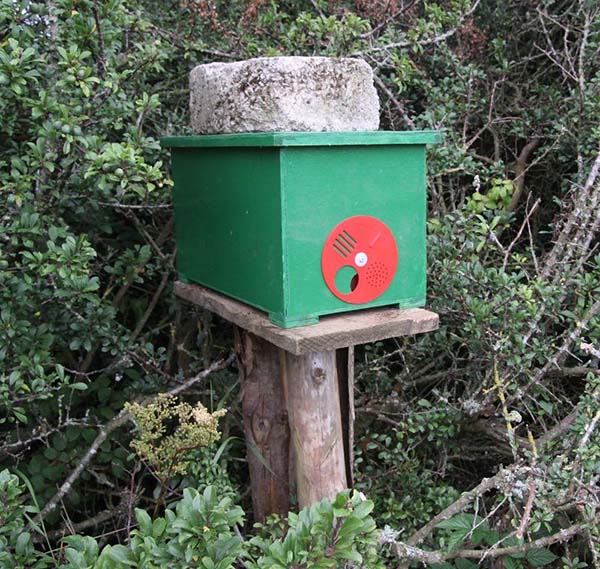
Catching swarms is a great way to get bees for free. This article not only tells you how to build the box but also how to attract swarms.
This is very beneficial for those that want to get into bees but don’t have the money for a swarm. Every spring plenty of bees swarm. You might as well be the one to catch them and offer them a new home.
Build This Swarm Box15. The $hive

This is pronounced ‘shive.’ The reason is that it is going to help you have the money hive. It is a plywood built beehive.
The plans come with a brood box and four supers. Plywood boxes are also known for being less expensive to build because of the difference in materials. So how much better does it get? A beehive for little money meant to be a great set-up for bees to produce maximum honey. It truly could be your money hive.
Build This Hive16. The Winter Friendly National Hive
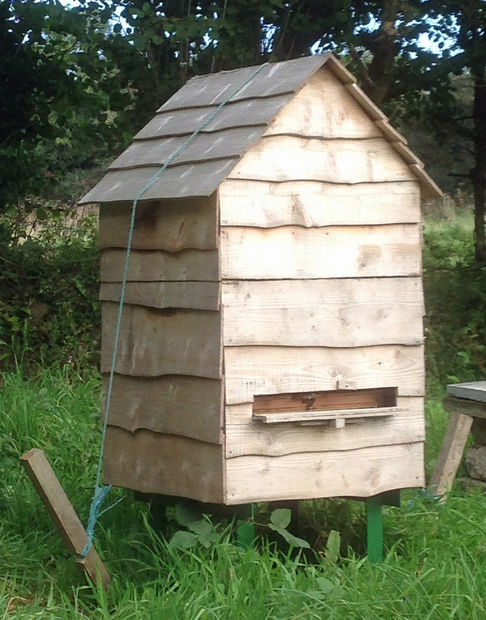
This hive is quite cute. It would fit in perfectly in any rustic area. Even if you have an urban homestead with a rustic décor, this hive would fit in perfectly.
Another nice feature (beyond décor) of this hive is that it can actually be insulated inside and out for the winter. This is supposed to give the bees a great chance of survival during the winter months. This means a head start for a stronger hive come spring.
Build This Hive17. The Original Warre Hive
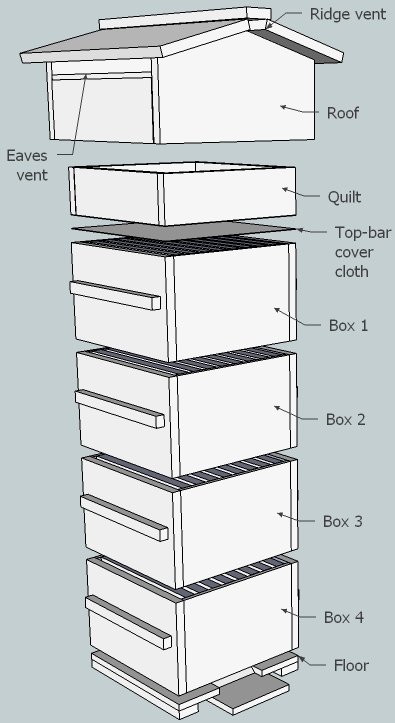
The Warre hive (pronounced war-ray) plans were originally published in the book Beekeeping For All. It was titled the ‘People’s Hive.’
These plans are meant to be exactly as the originally published plans from 1948. So if you are looking for an exact replica of the Warre hive, now is your opportunity to build your own.
Build This Hive18. Beehive In A Bucket
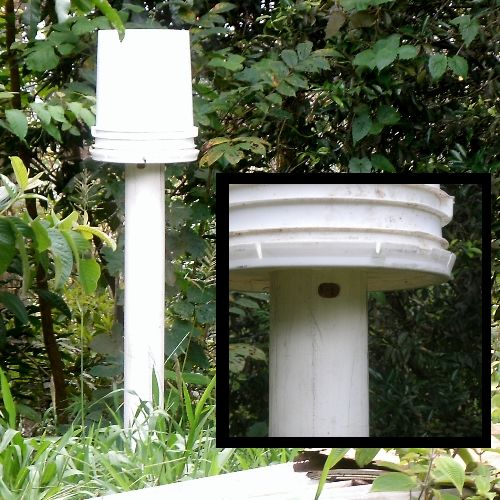
Okay, if you don’t care anything about honey but just love the ideas of having bees around to help your garden out then this is an inexpensive option.
If you just want to create a home for bees then place a pole in the ground with a bucket on top. It will give the bees a place to colonize and give them a reason to hang around your property.
Build This Hive19. The Beehive Cocoon
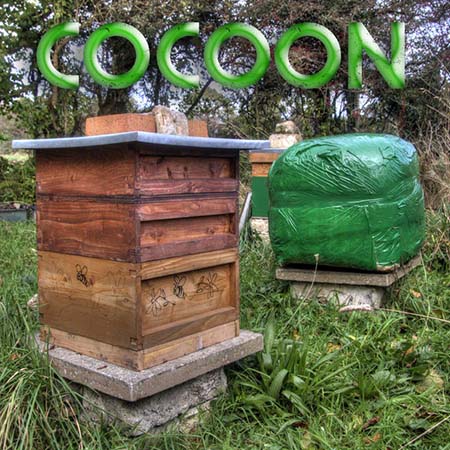
If you have already begun keeping bees and live in really cold temps then you might have noticed that a lot of your bees (like 2/3 of a hive) die during the winter because of hypothermia.
Well, you don’t have to settle for that any longer. Someone created the beehive cocoon. It is simple and inexpensive. It will do the trick in keeping your hive warm during those cold winter months.
Build This Hive20. The Honey Cow
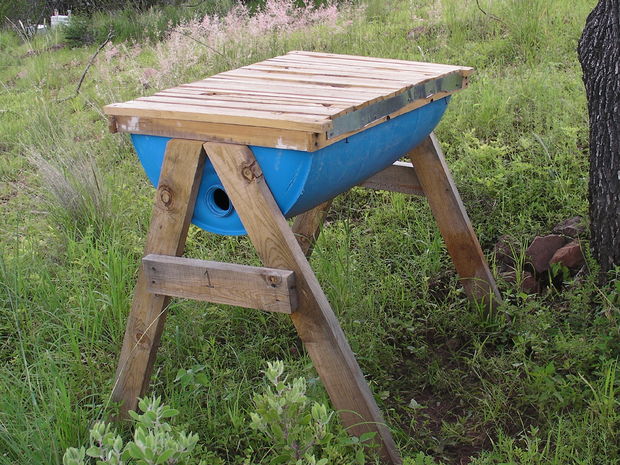
This is a top bar hive that is created with a 5-gallon barrel. It is inexpensive and super easy to use.
I never really thought about it before, but the author of this idea said that the idea behind this particular Honey Cow is for the bees to set-up as they would in a fallen log. That is pretty cool to be able to keep bees in as much of a natural set-up as possible.
Build This Hive21. The Top Bar Hive Plans
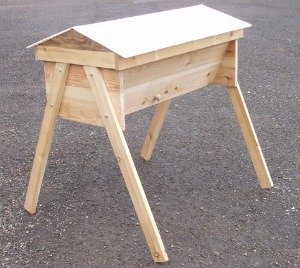
This is a great resource for top bar beehive plans. It is 40 pages of step by step instructions to build this hive.
You will also get a recipe for an eco-friendly wood preservative. This is actually a really cool feature because so many woods now days contain pesticides. If you want to raise organic bees or raise an organic garden then you will be interested in this recipe.
Build This Hive22. The Bee Box
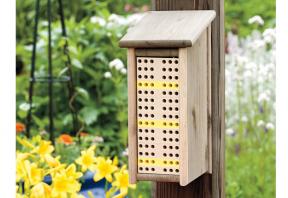
The bee box is actually created for a specific type of bee called the Mason bee. A lot of people really love them because they are super pollinators.
However, the Mason bees have special requirements for a house. They use mud to fill spots in their holes to lay eggs within the nest. So that is why this nest looks like a box with lots of holes. The bees will go in there, fill it with mud, and lay eggs until their hearts are content.
Build This Hive23. The Mason Jar Hive
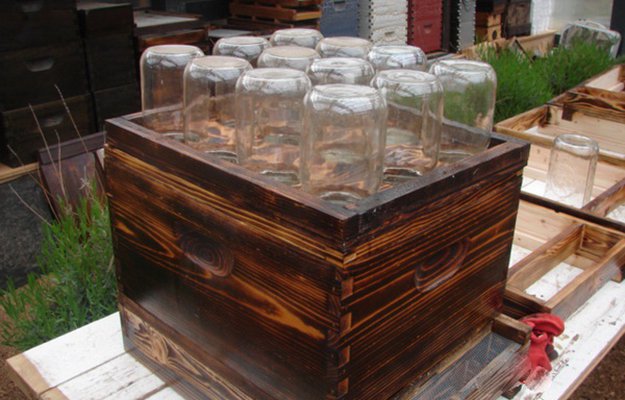
This is such a cool idea. You actually build a hive box but add Mason jars to the top of it. The bees will build comb up in the Mason jars.
So when you want to extract honey, you’ll just pull the jars off and slap a lid on them. It doesn’t get a lot easier than that. Not to mention, the hive is very pretty and interesting because you can watch your bees.
Build This Hive24. The Shoe-String Budget Top Bar Hive
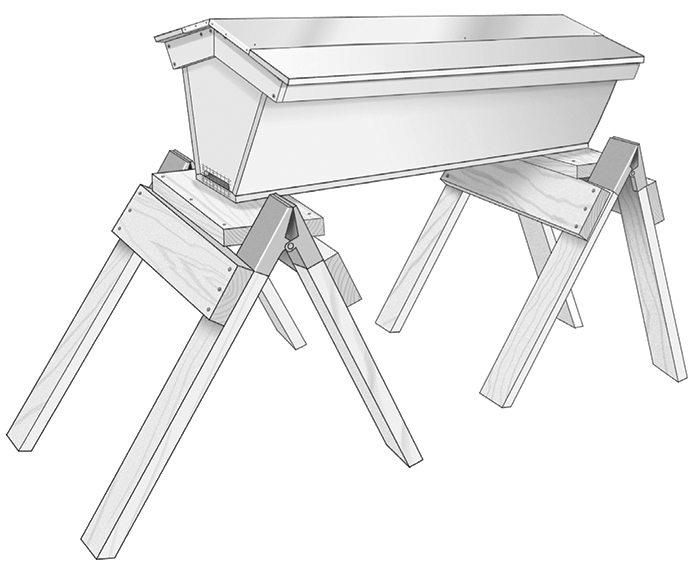
The more I look at Top Bar Hives, the more of a fan I believe I’m becoming. I love them because the whole idea behind them is to make keeping bees as simple as possible. That is what I want—simple. Otherwise, often frustration replaces fun.
So this beehive is meant for anyone. It uses the least amount of materials which in turn costs a lot less money. If you are just starting out and don’t want to spend a fortune this might be the hive you’ve been looking for.
Build This Hive25. The Movable Comb Top Bar Hive
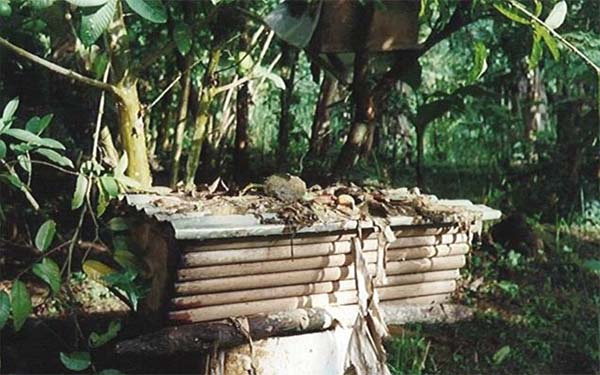
I love this article. The pictures are amazing and it is so interesting to see how people keep bees all over the world. Who knew that mud and cow poop was a great way to keep pests and other unwanted visitors out of a beehive? (We might need to remember that!)
This hive is so unique because they use materials on hand to build it. The comb where the bees build is removable one slab at a time and the hive is easy to move. Those are all really great features to have in a beehive.
Build This Hive26. DIY Honey Supers And Hive Bodies
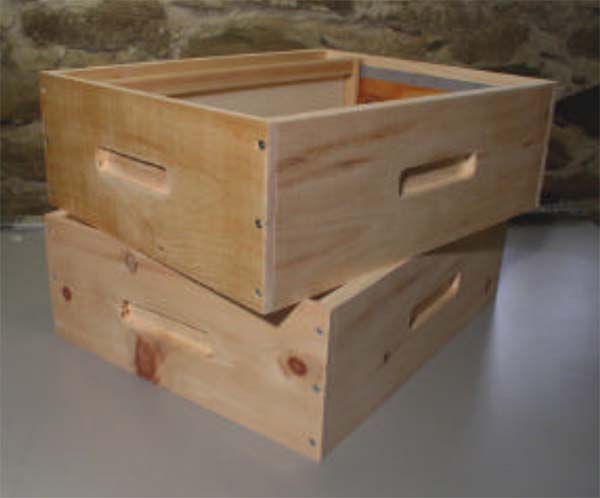
Have you ever purchased honey supers and hive bodies? I have, and they get expensive. This year has been a booming year for our bees. It feels like every time we turn around we need more equipment because they just keep expanding and running through it all.
So if you are in the same boat or are just starting out this could be of great help to you. Building stuff yourself is usually always the cheaper route. These plans are thorough and easy to read. Not to mention, the amount of money they could save you.
Build These Supers27. The Tire Beehive
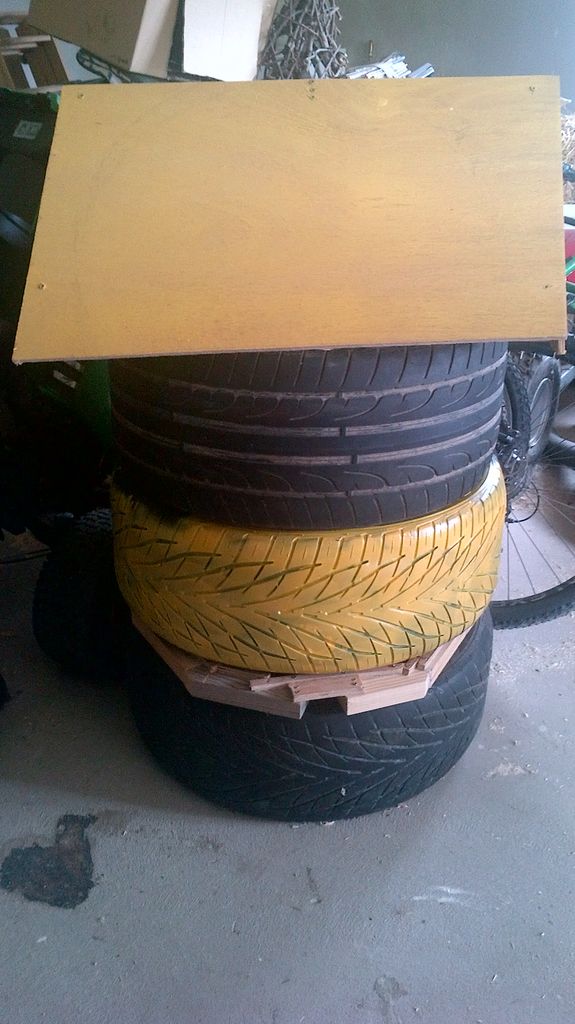
This is a truly unique beehive. If you are looking for a hive that will allow you to upcycle then this is it.
So don’t throw away those old tires. Just stack them together, build a roof and an entrance, and you’ll have a one of a kind beehive in no time and for practically no money.
Build This Hive28. The Beehive Construction

This is a really awesome set of plans. When you first get to the site there is just a picture of a hive.
But wait, that isn’t all. You just have to click on each section of the hive, and you’ll get a detailed plan to create each. Building plans don’t get much more awesome than that. I’m easily entertained in case you’ve missed that point by now.
Build This Hive29. Easy DIY Beehive
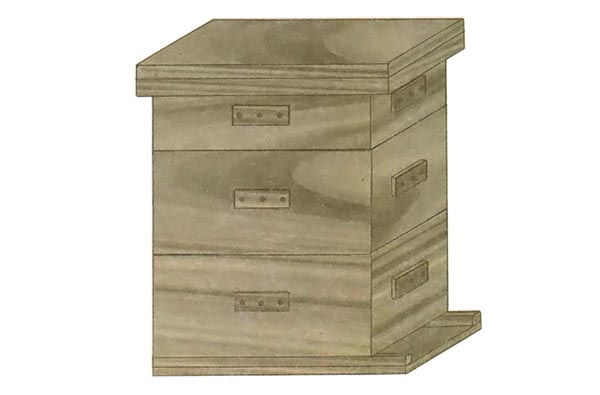
My husband is the carpenter in our bunch. I usually add the finishing touches or the finesse, if you will.
But when I read these plans, I immediately thought, “Well, even I could do that.” So if you are a novice at carpentry or maybe you are usually the one that adds the finishing touches that makes a functional project pretty, then this is a hive you can feel confident in attempting to build yourself.
Build This Hive30. The Warre Hives
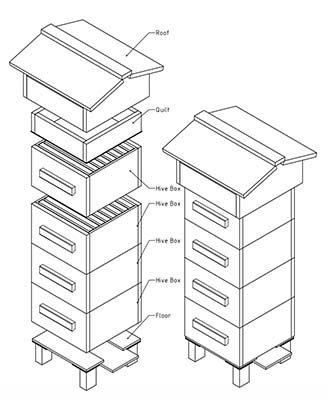
This is a great site filled with 18 different hive plans. They are all based on the original Warre hive.
However, they also offer variations to the original including a French-style Warre hive. So if you are a fan of the Warre hive then this site could help you find the perfect style.
Build This Hive31. 29 Plans For The Perfect Hive

This site offers 29 different plans for all of the beehives you could dream of. It also offers plans for hive covers and other hive accessories.
So if you aren’t sure of exactly what kind of hive you are looking to build then these plans could help you in that decision. The plans are also noted for being easy to download.
Build This Hive32. Bee Equipment Plans
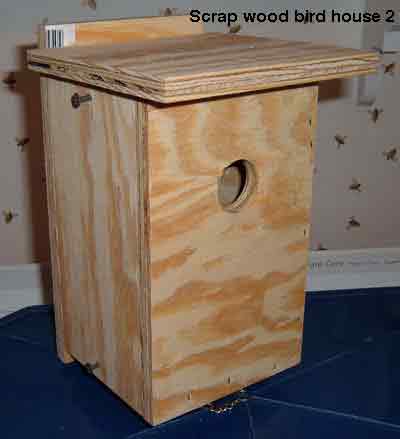
This site has pretty much every part of a hive that you will ever need. It is really cool because you can just scroll through the pictures to figure out what you need. Once you click on the pictures, you will get the most up to date plans available.
So if you want to build instead of buy then this is a great site for you to browse through. It will most likely have what you are looking for. If not, surely you will land some great ideas.
Build This Hive33. The Top Bar Hive
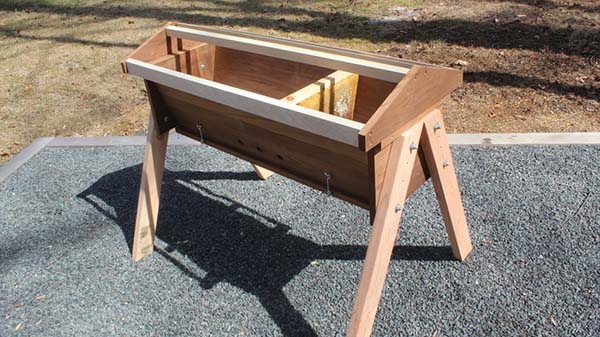
This top bar hive is pretty similar to the other ones mentioned. However, I will say that these plans might be a little more detailed.
So if you are new to the world of carpentry, then you might find these plans to be more comforting to you. There is a Youtube video and pictures to go along with written plans. If you are interested in a top bar hive then this could be it.
Build This Hive34. Traditional Top Bar Beehive

These are just regular old plans to build a Top Bar Beehive. So if you are someone that just wants to cut through the fluff and talk then this could be right up your alley.
However, if you are new to building things yourself this could be a little more difficult for you. There isn’t a ton of explanation, but there are pictures to help you along your way.
Build This Hive35. The Beginner Info For Building A Hive
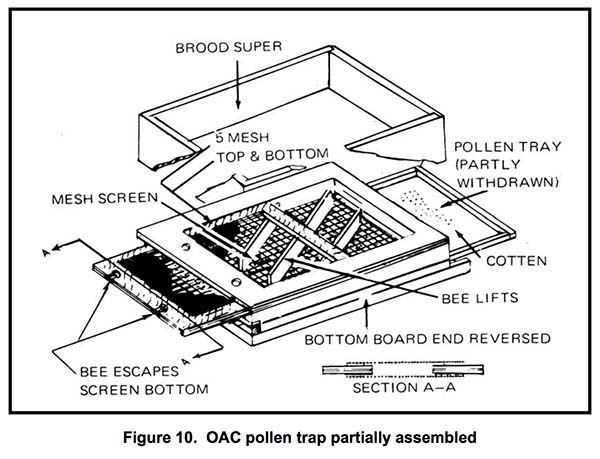
I really like this article and the plans it brings with it. The reason is that everyone can learn something no matter what stage of beekeeping they are in.
So in short, this article covers a lot. I won’t go so far to say it covers everything about building hives, but I’d say it is pretty close. If you are in search of information, then this would be a great resource for you.
Build This Hive36. DIY Hive Bodies
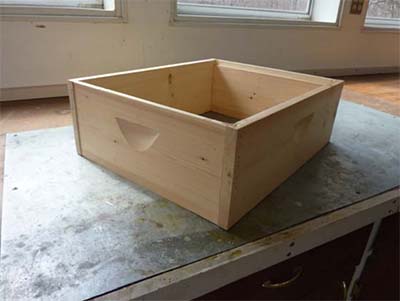
Hive bodies are obviously an important part of any hive. Finding the right plans to build them properly is essential in order to keep your bees. These plans are very thorough and easy to read to help you in that process.
So if you are someone that is new or seasoned in building hives these plans should work well for you. There are lots of awesome pictures and explanations to help you out in case you get stuck.
Build This Hive Body37. Modified OATH Hive
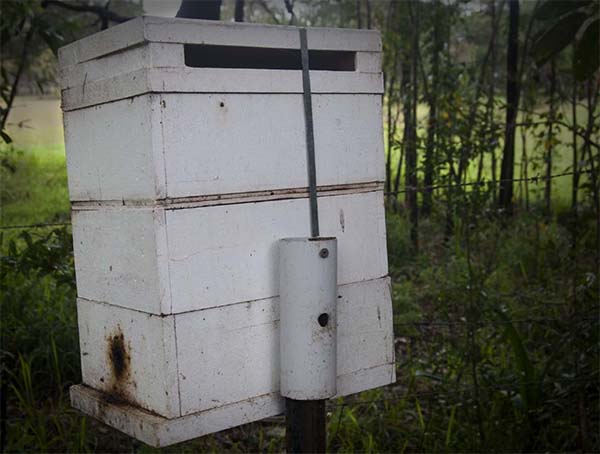
These plans are a modified version of OATH (Original Australian Trigona Hive). They include a removable honey ‘Super’ and a heat shield to assist in preventing hive over-heating during summer.
To completed hive can optionally be fitted with a piece of PVC pipe to allow easy mounting on a star picket.
Build This Hive38. 7 Plans by LSU AgCenter
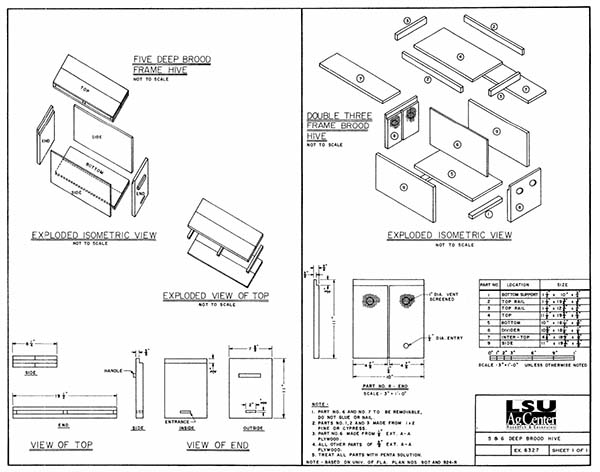
Not only the hive, but LSU AgCenter also provides you plans for the honey extractor for free. There are 7 plans in total, all in PDF format that you can download to your PC.
Build This HiveWell, all of my beekeeping friends (and those that are toying with the idea) I hope these plans will help you on your journey.
Keeping bees is definitely an adventure but also a great experience. If you haven’t taken the plunge, I encourage you to try it for a season. Who knows? You might really like it.
